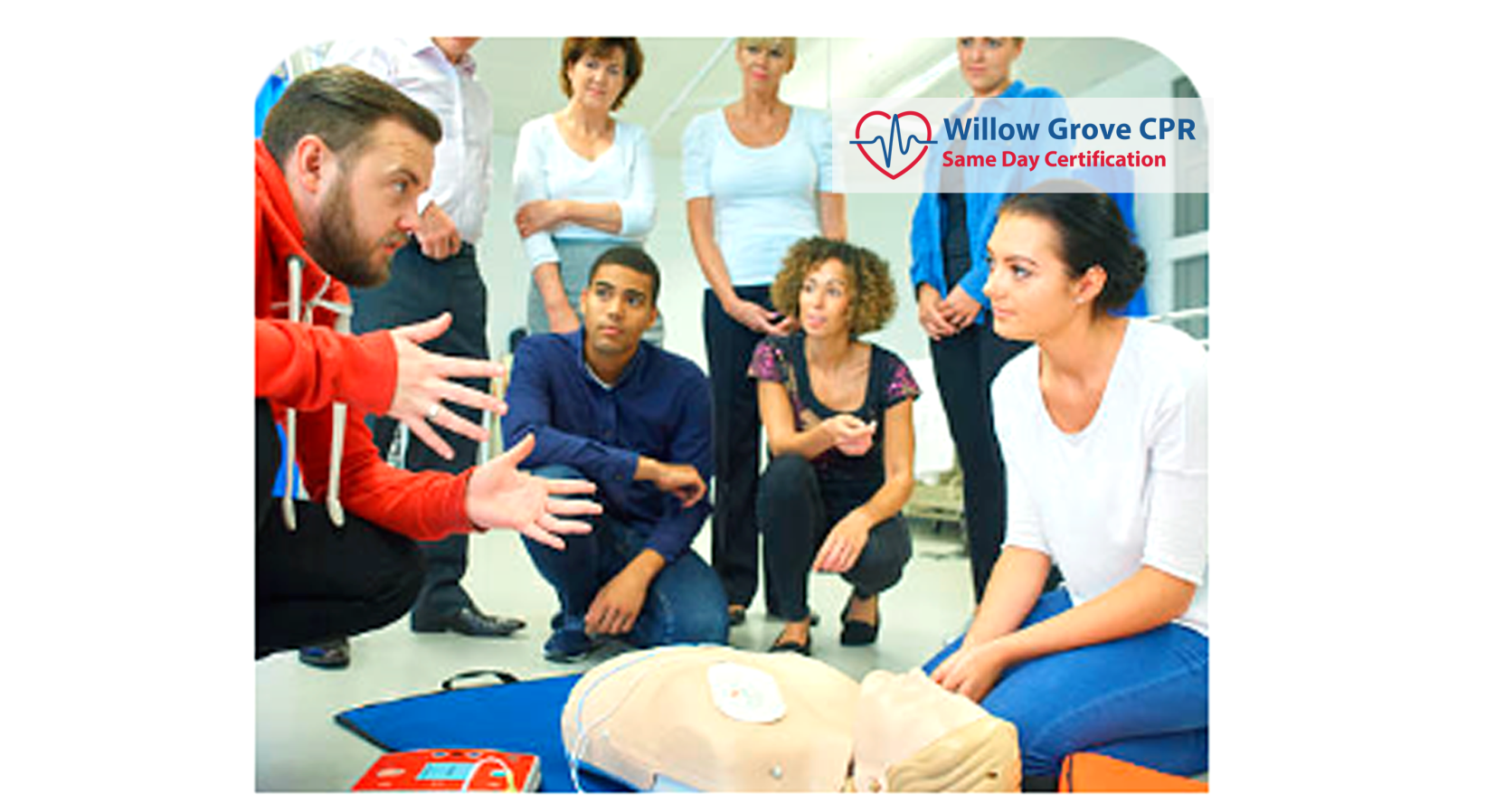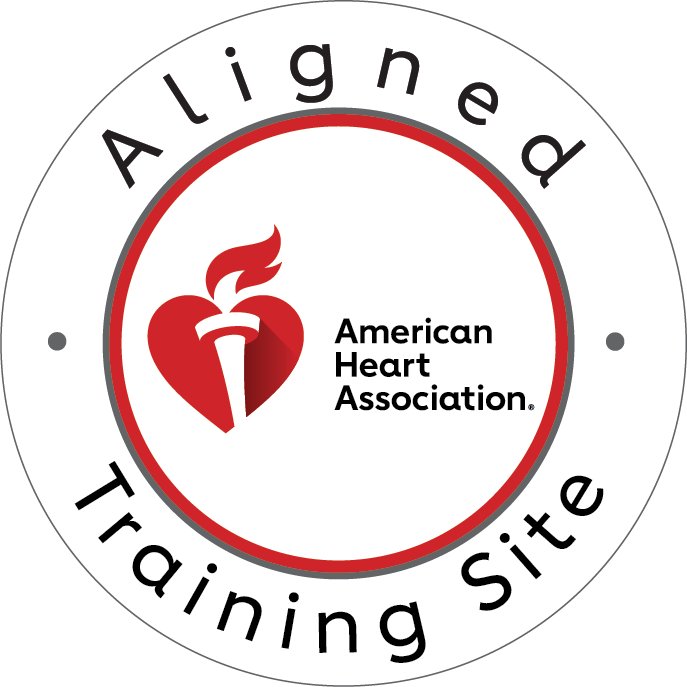The American Heart Association Basic Life Support (BLS) for Healthcare Providers Classroom Course: Learn to Save Lives
Did you know that the American Heart Association estimates that more than 350,000 out-of-hospital sudden cardiac arrests occur each year in the US? And that survival rates are higher when a bystander performs CPR? As a healthcare professional, you can help save lives by learning how to recognize when CPR is needed and how to perform high-quality CPR on a patient.

The American Heart Association Basic Life Support (BLS) for Healthcare Providers Classroom Course is designed to provide a wide variety of healthcare professionals the ability to recognize several life-threatening emergencies, provide CPR, use an AED, and relieve choking in a safe, timely and effective manner.
This course is for healthcare professionals who need to know how to perform CPR and other basic cardiovascular life support skills in a wide variety of in-hospital and out-of-hospital settings. Upon successful completion of this course students will be able to: Identify when CPR is needed to demonstrate the appropriate technique for performing high-quality CPR for adults, children
Course Description
This course is for healthcare professionals who need to know how to perform CPR and other basic cardiovascular life support skills in a wide variety of in-hospital and out-of-hospital settings. The content of this course reflects the latest scientific knowledge, practices and procedures of CPR, using adult, child and infant techniques.
This course provides an update on current guidelines related to adult, child and infant CPR/AED use; pediatric special considerations; evidence based medicine; choking relief; emergency care planning; communications with EMS providers or law enforcement personnel who may be present at the scene; equipment needed for resuscitation attempts.
The American Heart Association Basic Life Support (BLS) for Healthcare Providers Classroom Course is designed to provide a wide variety of healthcare professionals the ability to recognize several life-threatening emergencies, provide CPR, use an AED, and relieve choking in a safe, timely and effective manner.
The American Heart Association Basic Life Support (BLS) for Healthcare Providers Classroom Course is designed to provide a wide variety of healthcare professionals the ability to recognize several life-threatening emergencies, provide CPR, use an AED, and relieve choking in a safe, timely and effective manner.
This course is available as an instructor-led classroom course and includes hands on practical skills assessments with feedback from your instructor on how to perform them better.
This course is designed to provide a wide variety of healthcare professionals the ability to recognize several life-threatening emergencies, provide CPR, use an AED, and relieve choking in a safe, timely and effective manner. This course is available as an instructor-led in person classroom session.
Target Audience
The target audience for this course is anyone who is 14 or older and interested in learning more about CPR.
This course is for healthcare professionals who need to know how to perform CPR and other basic cardiovascular life support skills in a wide variety of in-hospital and out-of-hospital settings.
To ensure that you are able to utilize the skills you learn in this course, we recommend you review the following:
- The American Heart Association's Chain of Survival for Cardiopulmonary Resuscitation and Emergency Cardiovascular Care
- The American Heart Association's Guidelines for CPR and ECC
This course is designed for healthcare professionals who need to know how to perform CPR and other basic cardiovascular life support skills in a wide variety of in-hospital and out-of-hospital settings.
Learning Objectives of the AHA BLS Provider Class
After completing this course, you should be able to:
- Recognize when CPR is needed
- Demonstrate the proper technique for performing high-quality CPR for adults, children and infants
- Describe the importance of early use of an automated external defibrillator (AED)
Upon successful completion of this course, students will be able to:
Upon successful completion of this course, students will be able to:
- Identify when CPR is needed.
- Demonstrate the appropriate technique for performing high-quality CPR for adults, children and infants.
- Describe the importance of early use of an AED.
Identify when CPR is needed
When you see someone who is unresponsive and not breathing, it's time to act quickly.
These are some signs that someone needs CPR:
- If he or she is unconscious, not breathing normally, or not breathing at all.
- If he or she has stopped breathing for more than 2 minutes (or if less than 2 minutes have passed, there are no signs of pink color in the lips).
Demonstrate the appropriate technique for performing high-quality CPR for adults, children and infants
- How to perform CPR on adults, children and infants
- Importance of high-quality CPR
- How to perform CPR on an infant (under 1 year old)
- How to perform CPR on a child (1-8 years old)
- How to perform adult CPR
Describe the importance of early use of an AED
AEDs are easy to use and can reduce the time to defibrillation. They are safe and reliable, as well as portable and cost-effective.
Early use of an AED can be lifesaving; approximately one out of every eight people who suffers sudden cardiac arrest outside a hospital survives when an AED is used within three minutes.
Explain the importance of teams in multirescuer resuscitation and perform as an effective team member during multirescuer CPR
- An effective team performs CPR better than any individual rescuer.
- With multiple rescuers, you can save more lives than you could with only one person.
- The best way to save a life is to perform CPR continuously as long as it's needed by the victim. That's why it's important to have multiple people performing compressions at the same time rather than rotating turns like during single-rescuer CPR. In addition, there are many other skills that benefit from being done simultaneously by a team: ventilation, airway management, defibrillation and administration of medications.
- The most important aspect of multirescuer CPR is early use of an AED (automated external defibrillator). If your agency has an AED program in place, learn how to operate one so that you're able to use it whenever necessary — which will most likely be during multirescuer situations!
Perform as an effective team member during cardiopulmonary resuscitation (CPR) with the use of a barrier device or bag-mask device. Apply the BLS concepts of the Chain of Survival. Recognize and activate the emergency response system using local EMS protocols. Describe good communication as a member or leader of a resuscitation team. Describe the technique for relief of foreign body airway obstruction (choking) for adults and infants.
- Perform as an effective team member during cardiopulmonary resuscitation (CPR) with the use of a barrier device or bag-mask device.
- Apply the BLS concepts of the Chain of Survival.
- Recognize and activate the emergency response system using local EMS protocols.
- Describe good communication as a member or leader of a resuscitation team.
Conclusion
The American Heart Association Basic Life Support (BLS) for Healthcare Providers Classroom Course is designed to provide a wide variety of healthcare professionals the ability to recognize several life-threatening emergencies, provide CPR, use an AED, and relieve choking in a safe, timely and effective manner.




